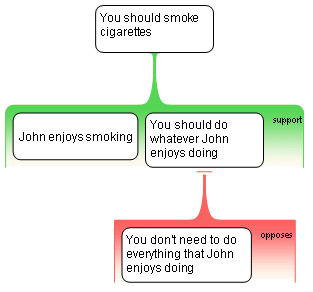The Science Of Scientific Writing Set 9 Set 9-Analysis maps • Second page • Example • Exercise 1 • Exercise 2 • Exercise 3 • Exercise 4 • Exercise 5 • Refinement Revisited • Rabbit Rule • Holding Hands Rule • Exercise 6 • Inference objections • Exercise 7 • Exercise 8 • Final.
OVERVIEW: The way to well-written science
PART I: Paragraphs and Sentences
SET A: Paragraphs: The Maps Behind Them
SET B: Paragraphs: Using Maps to Meet Readers' Expectations
SET C: Paragraphs with Something Extra: Points and Tails
SET D: The Generic Section: Expectations and Maps as Blueprints
SET E: Scientific Sections: The Methods and Results
SET F: Scientific Sections: The Discussion
SET G : Scientific Sections: The Introduction
SET H : Sentences
SET I : The Paper as a Whole
PART II: The Paper and its Sections
SET 1: Argument Parts
SET 2: Indicator Words
SET 4: Locating Arguments in Prose
SET 5: Rationale's Essay Planner
SET 6: Evidence in Arguments: Basis Boxes
Synthesis 1: Position-Early Paragraphs
Synthesis 2: Position-Final Paragraphs
Synthesis 3: Writing a Discussion I
Synthesis 4: Writing a Discussion II
Inference objections
The precision of an Analysis map clarifies how a particular type of objection works: those objections that bears upon an assumption, rather than on a main claim.
Remember our smoking example? Suppose we had this map:

It is structurally correct, but it doesn't show precisely how the objection works. This map makes it much clearer:

The objection undermines the assumption, rather than the main premise. The person offering it may agree that John enjoys smoking, but doesn't agree that this is a reason for you to smoke.
Note: You might wonder why we've only shown one premise in the objection. Nothing important would be gained by 'unfolding' it (it's a trivial claim connecting 'shouldn't' and 'don't need to'). Only show co-premises that improve or clarify your map.
(Jargon alert! The technical name for these objections is 'inference objections'. You don't need a formal definition to do these exercises, but click here (pdf) if you like that sort of thing).
Content of this page drawn in whole or part from the Austhink Rationale Exercises with permission from Austhink.